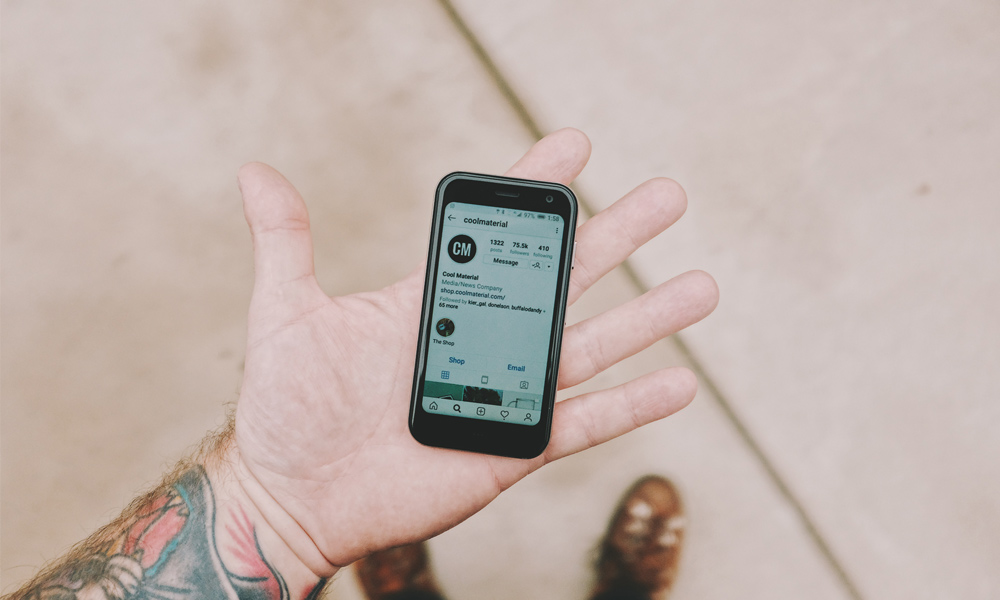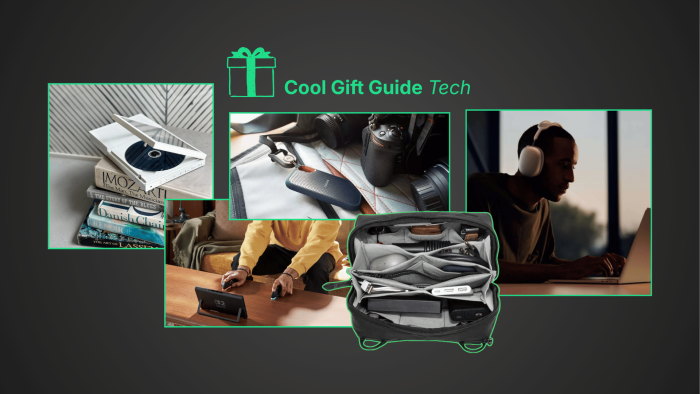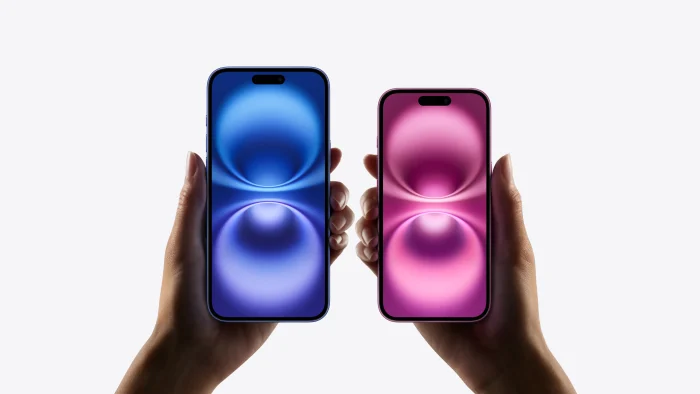Our lives are becoming more and more attached to the large phones in our pockets. We spend hours—a little less than three every day—looking at our phone screens, checking email, swiping left and right, scrolling, double tapping, and sharing our way through our digital lives.
Recently, the question has become: “Is that too much time?”
A lot of people seem to think so—including some of the biggest innovators in tech. The studies are also clear about the reality of screen addiction and the potentially disastrous effects it has on our lives.
Such ominous research has motivated companies like Apple and Google to subscribe to a new “digital wellness” craze by offering features like “Screen Time” and “Digital Wellbeing,” both of which are designed to allow people to monitor the time they spend on their phone. Even individual apps like Facebook and Instagram have gotten in on the deal, releasing their “Activity Dashboard” back in August that allows users to better manage their time on the apps, which are meant to be addictive by design.
Still, some people don’t think that’s going far enough.
Enter Palm.
We had the chance to head up to New York City last week and meet with Palm founders Howard Nuk and Dennis Miloseski, as well as Palm investor and ambassador Steph Curry (yes, that Steph Curry) at the Golden State Warriors vs. New York Knicks game to talk about the Palm, early feedback on the device from critics, the dangers of screen addiction, and why now was the time to launch a phone that is creating quite a bit of controversy in the tech world.
Since we were skeptical of the phone’s practicality ourselves, we took the opportunity to ask some questions and get to the bottom of what, exactly, the overall goal is here.
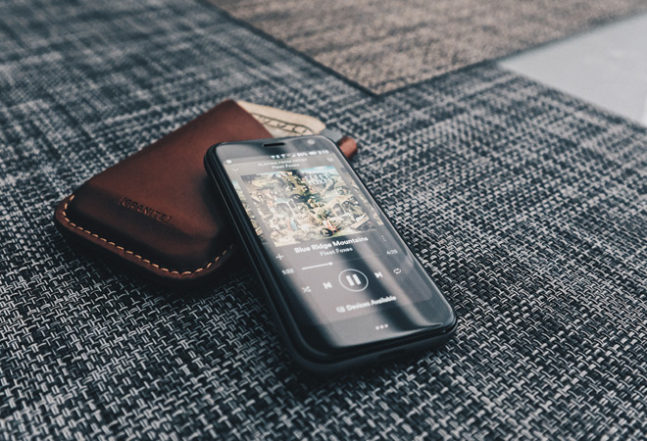
What Is It?
Essentially, the Palm a small, functional, and efficient mini-phone that’s meant to be a companion to your larger, much more capable big-boy smartphone. Palm is about the size of a credit card and features a 3.3-inch HD display (445 PPI high pixel density LCD), impact resistant front and rear Corning Gorilla Glass, a stout 12mp rear camera (with flash), an 8mp front camera, a billet aluminum mid-frame, 3 GB of RAM, 32 GB of storage, a smaller (but adequate) 800mAh battery, in-phone speakers, facial recognition, and 4G LTE connectability.
The phone is designed to sync to your primary Android or iOS device, and has full access to the Google Play store.
… For those keeping score at home, it sounds a lot like the Palm is essentially a really tiny phone. Because it basically is. But here’s where it steps away from convention.
The Palm has what the brand calls “Life Mode,” which eliminates distractions by silencing all incoming calls and notifications as soon as the screen is turned off. The primary reason we check our phones throughout the day is because we’re slaves to our notifications. The folks at Palm realized this early on in the design process, and Life Mode was the result.
How Can It Help?
“Screens are not the problem,” Miloseski explains to us in a crowded hallway during the game’s third quarter. “I have a big TV that’s made for movies and watching with my loved ones. I have a big smartphone that I send more emails and do more work on than my actual laptop. The Palm represents freedom for me. It puts me in control of and provides access to all the apps I want, and none of what I don’t, and I don’t have to worry about this incoming notification stream that bogs us all down every day.”
From what we gathered, the idea behind the phone is to give users access to all the things they value on their bigger devices.
“We saw screen addiction happening two years ago,” Miloseski says. “I used to give talks all the time and say, ‘We unlock our phone 120 times per day,’ and then it was, ‘We unlock our phones 150 times a day,’ and now we’re unlocking our phones 180 times a day. It’s very real, and it’s only getting worse. That, for us, was the whole reason for the Palm.”
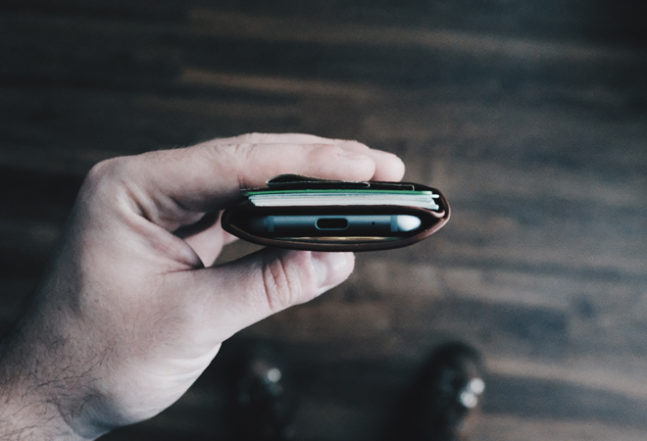
Points of Contention
One of the other big points of criticism for the Palm is that it’s technically not a standalone phone, but rather, a companion device. Miloseski says the move to make it a companion device was intentional.
“We hear the criticism loud and clear,” Miloseski explains. “One of the main reasons we’re looking at the companion market is education; how to start using a device like this. Imagine walking into the store and making a decision to give up a six-inch phone for a three-inch phone. That’s a lot for most people.”
The team hopes the Palm, if nothing else, will be a learning experience for an industry concerned with overconsumption and consumers who want to take a step back from the time they spend checking in on and scrolling through their primary phones.
At the end of the day, it seems like the big question people are waiting for the answer to is: “Is it worth its salt? What kind of impact will the Palm have on the market?”
We, like everyone else, aren’t really sure yet. Nuk and Miloseski think the Palm is a thoughtful reply to some very real concerns about the way we’re using technology and the impacts it’s having on our lives.
In a nutshell, the Palm is a phone that’s meant to be more capable and leave you more connected than, say, an Apple Watch, but without begging for the usability of your primary phone.
“The Palm is also my fitness device. It’s my streaming device. It can handle gaming. We’re hoping people will take these phones and use them for the things they need from their phones, and not just fill them with all the stuff they have on their smart phones.”
Our Thoughts
We were given a Palm to put through the paces for a couple weeks, and as people who are constantly using our mobile devices as ways to keep in touch with our team, freelance writers, customers, etc., here are some of our first impressions:
We think the Palm is definitely going to be the kind of device people will need to experience for themselves to really understand its value. It’s easy—as we know, firsthand—to criticize the phone as “just another distraction device,” but in the week we’ve had it, our experience has been pretty on par with what Miloseski, Nuk, Curry, and the rest of the Palm team are hoping for.
We purposefully kept it to the bare minimum. We downloaded Gmail, Spotify, Instagram, and VSCO on the phone, and left out the dozen or so other apps we constantly keep on our iPhones.
The keyboard is inconveniently small, which actually works in favor of the phone’s mission. The idea is that it’s not really a joy to use. We reply to emails, text messages, and DMs as needed, but we don’t make it a point to arbitrarily be on this device if we don’t have to.
The phone is smooth and intuitive, and we’ve had no problems streaming Netflix (which we deleted after we saw it could run it), YouTube, etc. It can surf the web and give directions, and Google Assistant is accessible with two clicks of the phone’s only actual button.
We can also appreciate the accessories Palm has released with the phone, that include a fitness sleeve, bike mount, a slew of wallets, and a trusty lanyard. We opted for one of the wallets, made in partnership with the folks from Granite, essentially turning it to something we carry in our back pocket everywhere we go.
If you’re looking to drop those numbers you see every week when Screen Time pops up, the Palm is worth considering.

